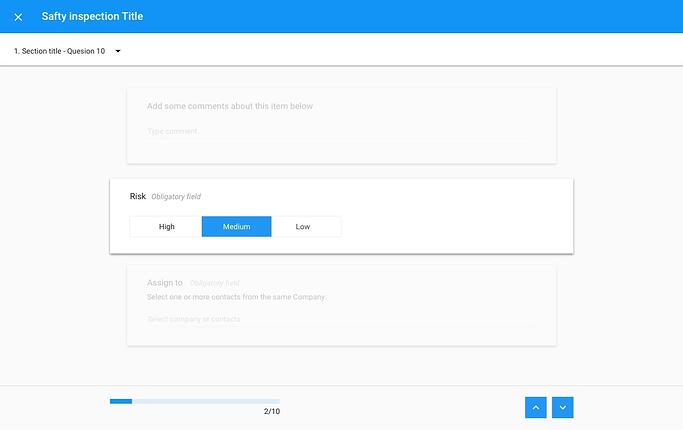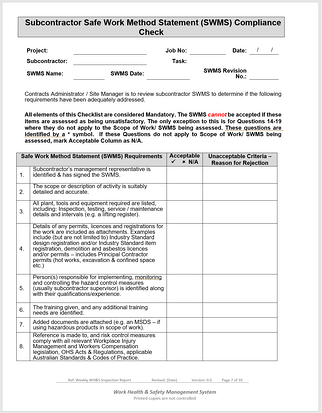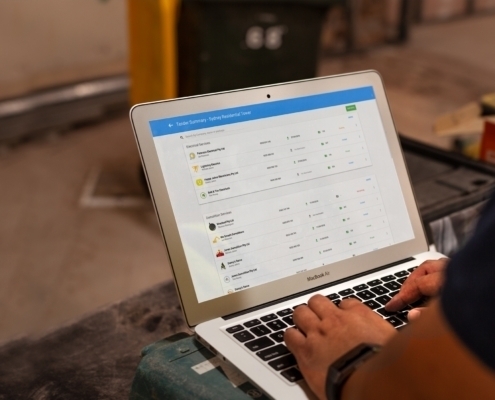Workplace health and safety (WH&S) of every construction site is critical not only to the construction company managing the project, but also to all stakeholders such as the clients, consultants and sub-contractors.
While most construction companies will preach their standards of Quality, Safety, On-time, On-budget processes, many do not have the sufficient procedures or man power to manage safety effectively.
If you ask workers on most construction sites how they rate the safety of their project, they are likely to tell you that it’s more about completing the paperwork required than actively being aware of, and fixing, all safety hazards.
It’s not that site supervisors and managers do not care about the safety of people around them. Not at all. It is a common theme that site crews have an enormous workload in their day-to-day operations to keep projects moving forward, and unless there is a specific person whose role is to audit safety every day, then it’s unlikely that the jobsite will be safe 100% of the time.
The following are 4 tips that can be incorporated into your company’s policies to ensure that your site is kept safe for all workers and your paperwork is kept in order:
1. Easy to follow and site-specific weekly safety inspections
Completing a weekly safety inspection is the most common procedure for a construction project. It sets out the most common safety issues to check such as fire extinguishers, PP&E, excavations, plant and equipment, etc.
By preparing a site-specific safety inspection, the site team can easily tick off hazards and assign any rectification work to the correct person or contractor.
Keeping a log of all safety inspections in your project management software along with details of who fixed the issue and when they completed it, will allow your team to keep on top of the most common safety issues on site.

2. Make sure that safety hazards are addressed before next inspection
Completing a safety inspection is important, although making sure that the correct actions have been taken to address identified hazards is even more important.
While many companies are good at completing the inspection and the sending it to sub-contractors to complete, many don’t actively check the previously identified hazards or safety notices before starting the next inspection.
Ensuring that your site crews actively check and sign off the previous safety issues prior to starting the next inspection will eliminate risks being missed.

3. Conduct reviews of all contractor safety information as they begin work
All contractors that begin work on a project must be correctly inducted into the site and made aware of any existing hazards. In addition, they must provide their own company’s Safe
Work Method Statements (SWMS) to be kept on file.
The site manager or foreman should always check the SWMS and approve the document as a company policy. This ensures that the contractor and their workers are aware of how to complete their work in a safe manner and have the correct protocols in the case of emergencies.
The review of all contractors’ SWMS should be part of the weekly inspection process and included in the overall inspection document. This gives the site team an understanding of the contractor’s scope of work and which areas they are responsible for in the case they see a hazard that must be addressed.
4. Hold regular tool box meetings as supporting safety documentation
Holding regular toolbox talks with everyone on-site before work begins is the easiest way to:
a. Make everyone aware of new hazards on-site.
b. Chase up safety hazards that must be addressed prior to the next inspection.
c. Allow input by other contractors of any safety or other issues they have witnessed.
These short meetings form part of the supporting documentation for the overall safety process of every project. They reduce the risk of injuries occurring and avoid major fines and delays to the project.
Incorporating a simple and streamlined approach of weekly inspections, timely follow-ups, approval of safety documentation and regular meetings, can mitigate many safety issues without the need for a dedicated safety manager.






